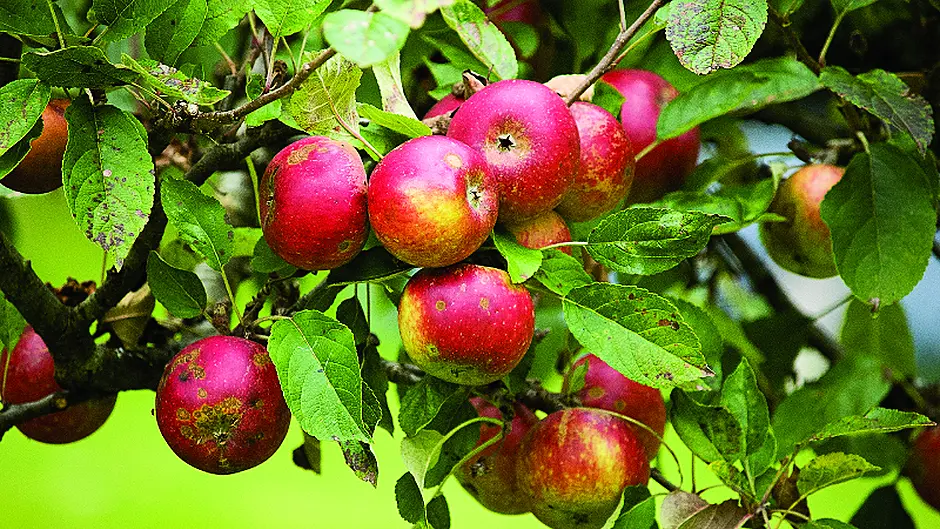Gardening with Joyce Russell
Plants can keep growing well through a mild September and this can make all the difference to late crops. Carrots and pumpkins get a chance to grow a little larger before lifting and the latter may ripen some extra fruits. A good autumn also helps winter crops to establish and reach a reasonable size before any cold weather arrives.
This can be a good time for some flowers to produce a second flush of blooms and borders can be filled with a scatter of jewel-like colours. Enjoy what the season brings and accept any good weather as a post-summer gift.
Apples
I have to confess that my trees haven’t been as bountiful this year. Some, that usually produce buckets of fruit, have only the odd apple dotted around their branches. Others have clusters of fruit in sheltered places. Blossom was late to form in the spring and small fruitlets later; my trees also sit in a frost pocket at a significant height above sea level. I’m not making excuses, but simply explaining that what happens in the early months of the year is as important as care and location for getting a good apple harvest.
Another thing to note is that apple and pear trees can be forced into biennial bearing. This is where a tree that fruits heavily in one year, produces little or nothing in the following one. This pattern can be hard to break but the best way to do so is to feed the tree well in early spring. Keep the base free of weeds, if possible, and water in any dry weather. It can also be helpful to thin fruit early in the year on a heavily laden tree.
Under cover
My polytunnel is still bursting at the seams with summer crops and it can be hard to find space for the winter ones. You can hold some plants in pots for a while, provided they don’t become root-bound, but really it is important to start freeing up the space to sow and plant into the borders.
It is seldom worth cherishing failing plants at the expense of new ones. You may get a few last cucumbers, or courgettes later in the year than from outdoor plants. If you have the space, then by all means keep those plants going. But if you are sacrificing a good crop of winter greens for the sake of a few small squash, then clear the old plants and replace with productive ones.
You can buy spring cabbage plants to grow in the greenhouse, or there is still time to sow some if you want your own variety to harvest in April. Spinach, turnips and chard are easy winter and spring crops, so sow and plant a few of these too.
And I would make a plea to sow rows of salad leaves wherever you can, even if this means fitting them in between tomatoes (lower leaves should be stripped at this point and plenty of light will reach through). Winter salad sown now will give pickings for months and the plants will be slow to bolt in cold weather. You can have delicious mixes of winter lettuce plus mustard greens, purslane, rocket, mizuna, mibuna, cress and more if you sow before the end of September.
Beans galore
It has been a very good year for beans and it can be hard to know what to do with the glut. Dwarf French and climbing ones have performed well, but there is little to beat the productivity of runner beans. For the amount of ground they cover, they produce an enormous crop. Look under and behind leaves for hidden monsters and remove them while picking the smaller tender ones.
I use a potato peeler to run down each side of runner beans and remove strings quickly. Don’t use pods that are tough throughout: no amount of cooking will get rid of the stringiness.
And if the time comes when you have given away, eaten, and stored as many beans as possible, then it is acceptable to lift the lot. Pea and bean stems are great for adding an aerating layer to the compost heap.
Onions and garlic
Autumn planted onions and garlic do particularly well in my garden, but I know that some gardeners planted these last year only to have them rot in a mild, and very wet winter. It is always worth planting into a raised bed, or raising the soil up into a ridge for these autumn plantings. This allows the soil to drain more freely and keeps roots above the water line.
It is also a good idea to cover rows with crop cover, or horticultural fleece, to protect against cold weather. Raise this above the growing plants on hoops of wire or alkathene pipe.







